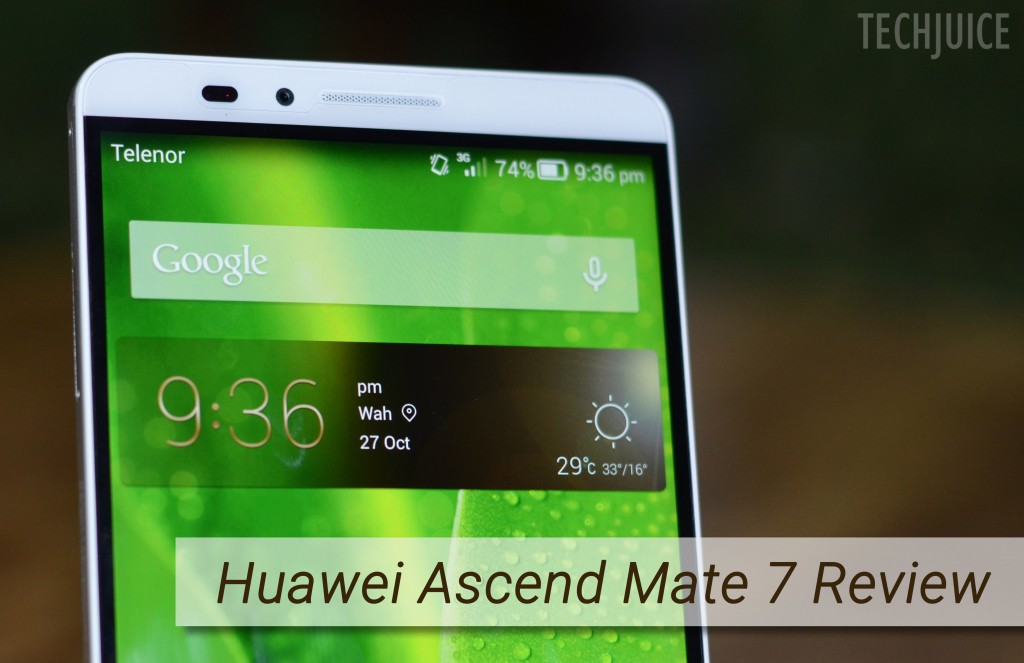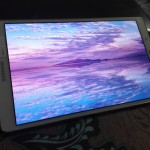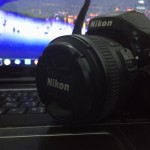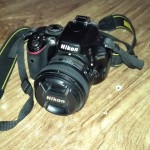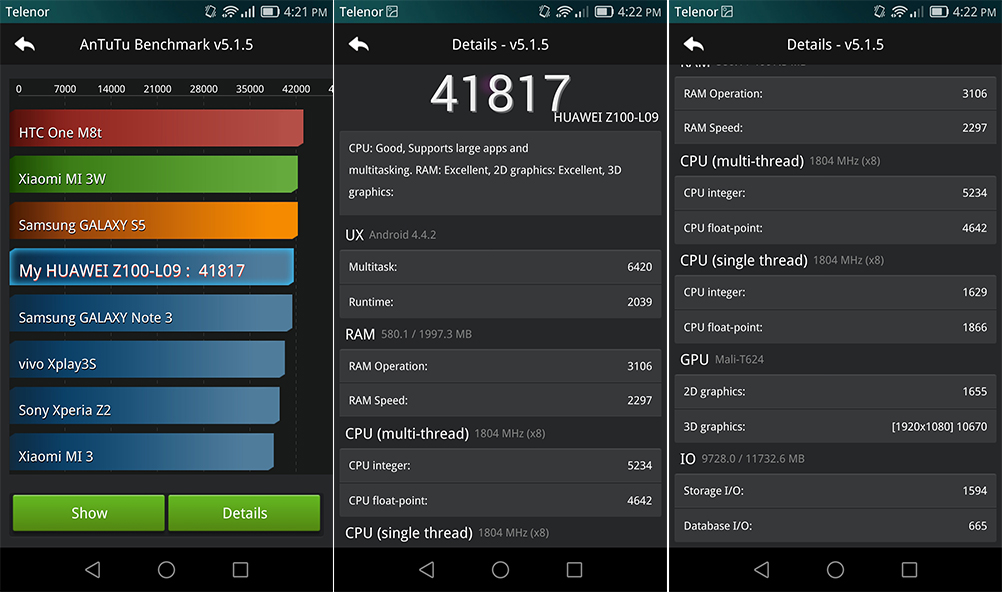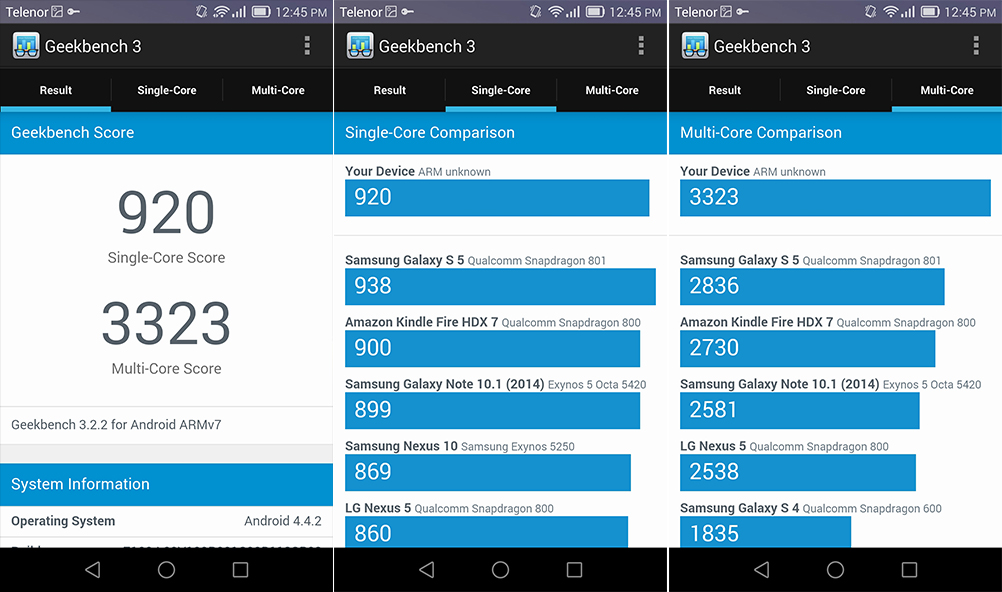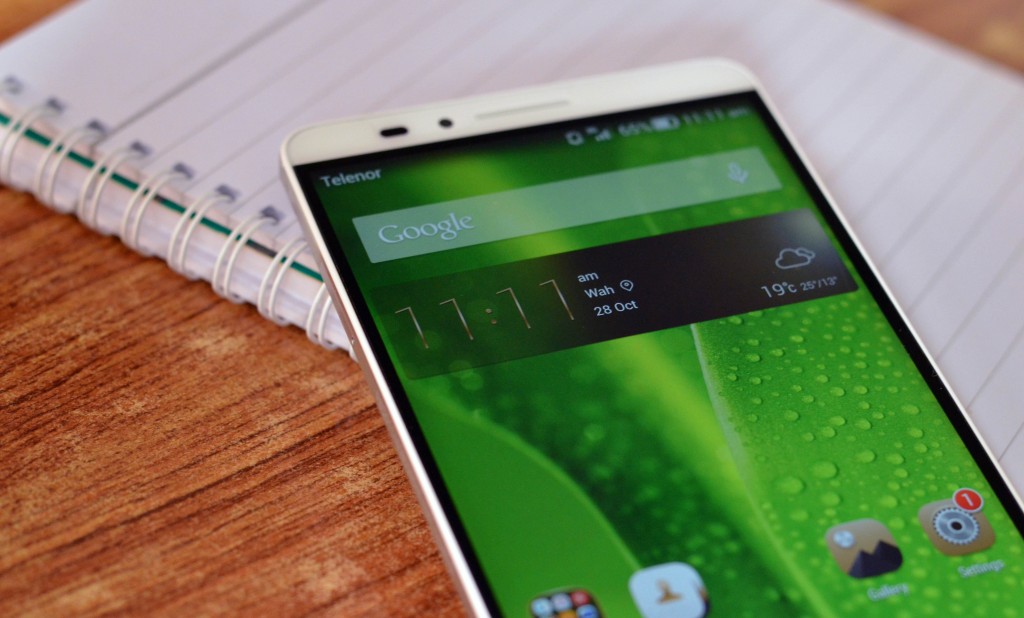For the Chinese ICT solutions provider and equipment manufacturer Huawei, the past couple of years have proved to be extremely favorable. First, it was ranked at third place for the global smartphone shipments in 2013, then it made history by being featured on Interbrands’ Best Global Brands ranking as the first Chinese firm earlier this year. The response to its smartphones, specially the Ascend lineup, has been positive in the recent past at MWC and IFA events. And finally, it went on to sell over a million units of its latest Ascend Mate 7 phablet even before it was made available in the US and European region.
It’s the same device—Ascend Mate 7—that we’ve been testing for the past couple of weeks, and we have prepared a detailed and exclusive critique of the device for our readers; so without further ado, let’s begin with our Huawei Ascend Mate 7 review.
Specifications
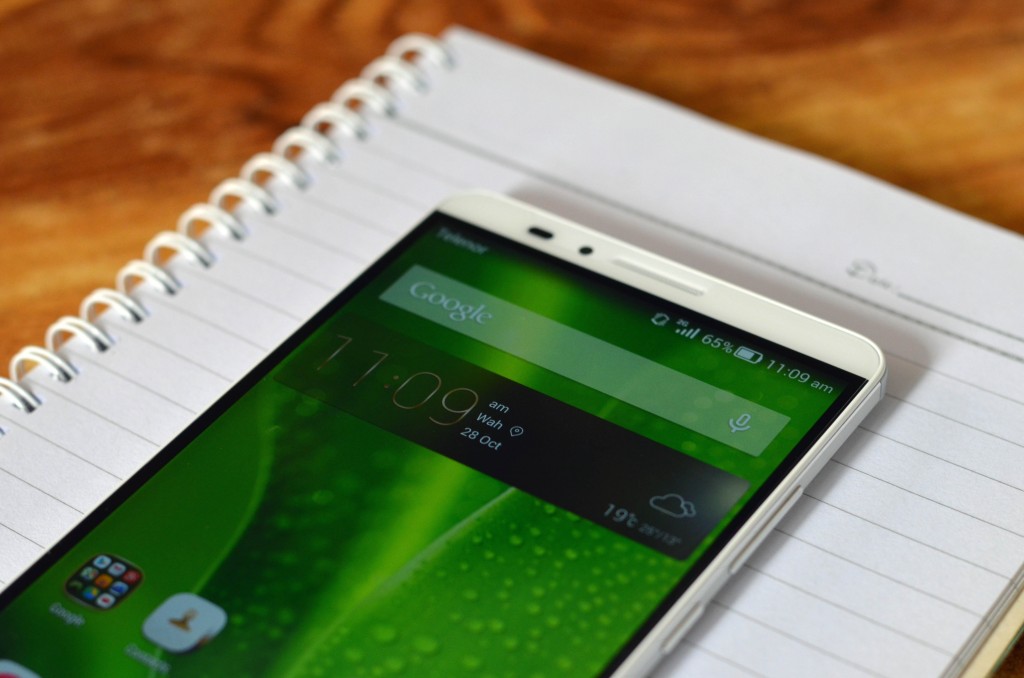
Before diving head-on into the details, let’s take a quick overview of the device specifications.
- DISPLAY
- 6-inch FHD display
- 1080×1920 pixels resolution (~368 pixels-per-inch)
- Corning Gorilla Glass 3 protection
- PROCESSING POWER
- Chipset: HiSilicon Kirin 925 SoC
- CPU: 8+1 core architecture (1.8 GHz quad-core Cortex-A15 + 1.3 GHz quad-core Cortex-A7 + 230 MHz co-processor)
- RAM: 2 GB (16 GB model) / 3 GB (32 GB model)
- GPU: Mali-T628
- MEMORY
- 16 GB / 32 GB
- microSD card slot for expansion up to 128 GB (can also be used as nano-SIM slot)
- CAMERA
- 13 MP primary, HDR, Object tracking, 1080p video rec.
- 5 MP secondary, 1080p video rec.
- SOFTWARE
- Android v4.4.2 KitKat
- Huawei Emotion UI v3 (EMUI 3.0)
- CONNECTIVITY
- Standard Micro-SIM slot
- microSD slot can also double as Nano-SIM slot
- GSM, 3G and LTE connectivity
- GPRS, EDGE, Wi-Fi 802.11 a/b/g/n, dual-band, DLNA
- Bluetooth v4.0, NFC
- MicroUSB v2, USB Host/OTG
- GPS, A-GPS, GLONASS
- MISCELLANEOUS
- Battery: 4,100 mAh
- Fingerprint Scanner
- Color options: Obsidian Black, Moonlight Silver, Amber Gold
Device Build & Display
Ascend Mate 7 brandishes a premium-looking Aluminium build on all four sides and back, which is particularly reminiscent of HTC One’s build. The back-panel features chamfered edges and a curve which enable the phone to rest in one hand easily without slipping. Front side is dominated by the display which is flanked by plastic strips on top and bottom.
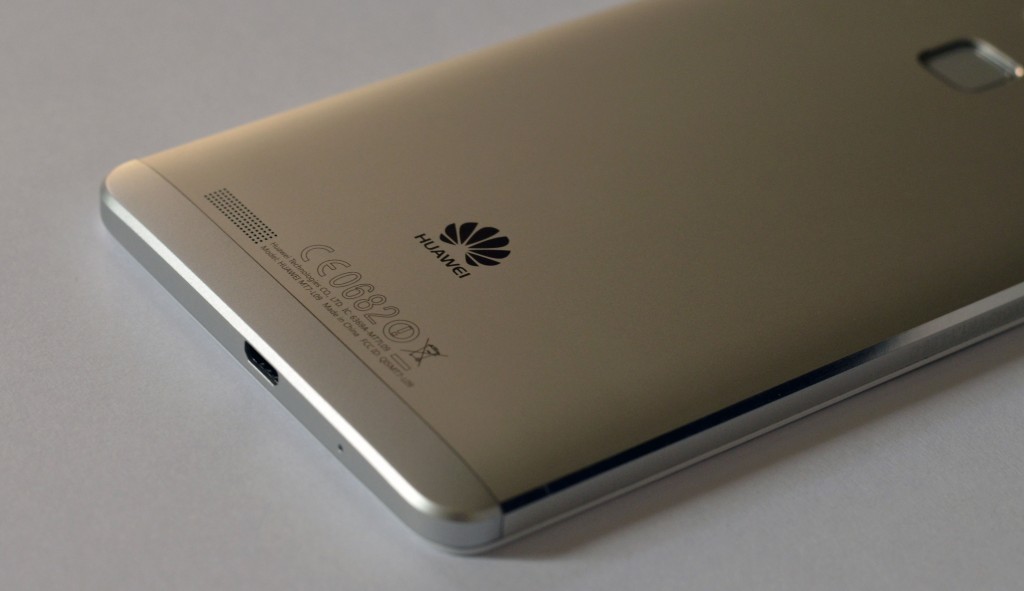
Besides the display, front-panel is home to the earpiece found on top-center. To the left of the earpiece reside front camera, proximity sensor and the ambient light sensor. To the right of the earpiece is a notification light which is otherwise invisible except when lit-up.
On the right side of the device one can find volume rocker, and the Power (Wake/Sleep) key under it, just within the right thumb’s reach. Both keys are carved out of brushed aluminium and have a nice tactile feel to them when pressed down.
There are 3.5 mm audio jack and secondary microphone on top side; the microUSB cable jack and primary microphone on the bottom; and sliding microSD card and micro-SIM trays on left side of the device.

The huge 6-inch display takes most of the space on front. The bezels on the either side of the device are extremely thin, measuring just 2.9 mm (making the screen-to-body ratio 83%), and are impossible to spot on the Black-coloured device when the display is turned off; the display seems edge-to-edge on White device as well horizontally.
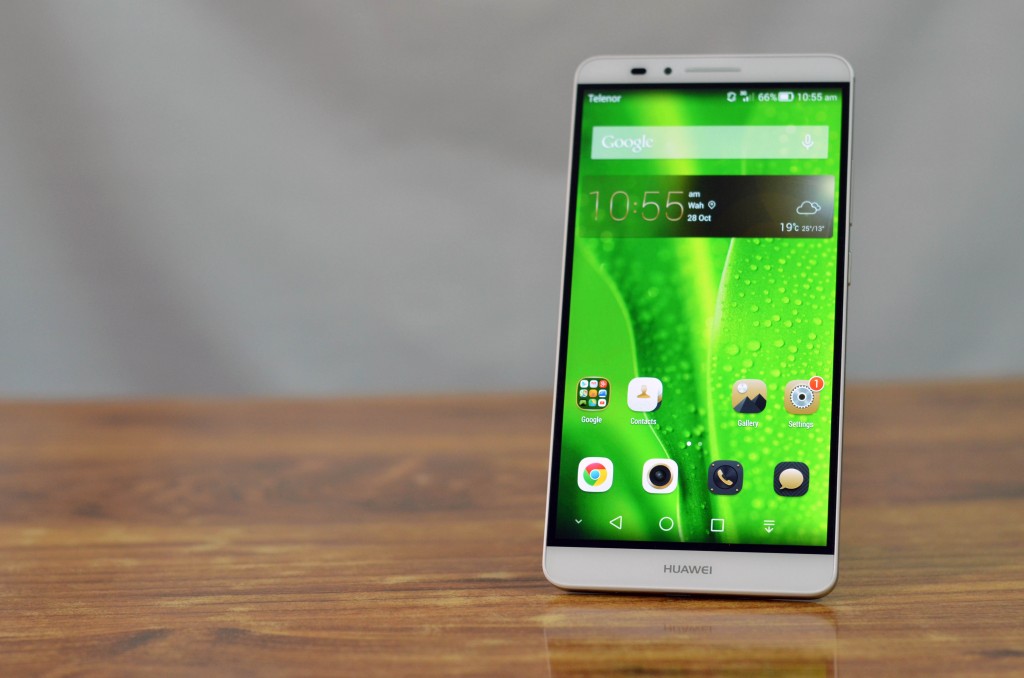
We strongly feel that the 6-inch real-estate deserved at least a 2K-grade QHD display; instead, Huawei opted for lower-resolution FHD one with a resolution of 1080×1920. Still, the device’s display doesn’t seem to suffer from visible pixelation, neither does it show any signs of significant lack of capabilities. Viewing angles and sunlight legibility of the display are decent enough for standard day-to-day use.
Processing Power & Memory
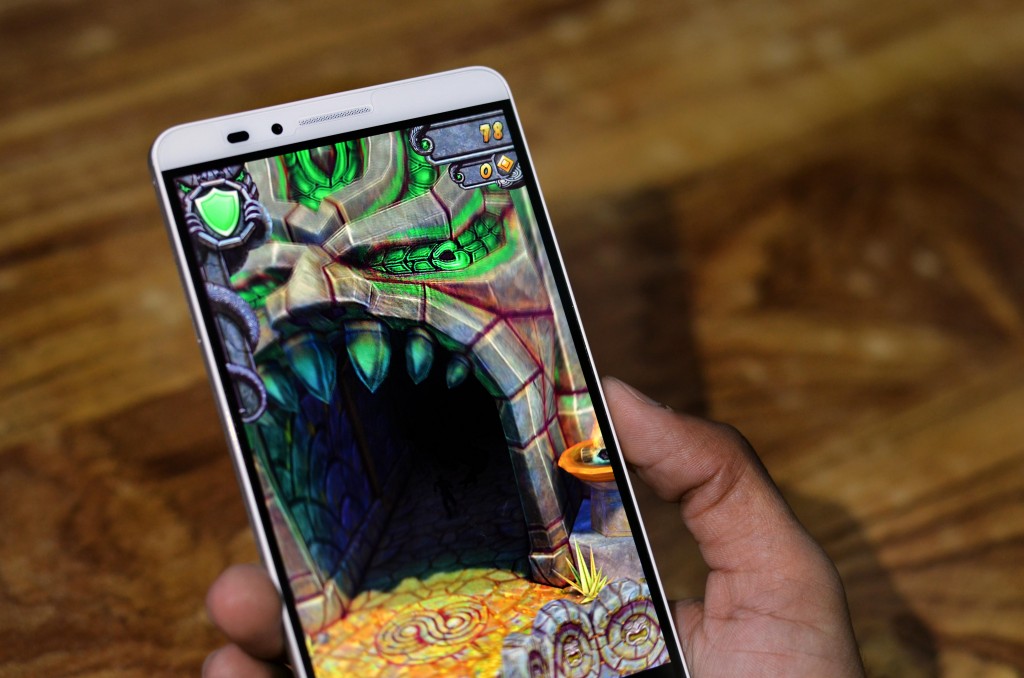
Huawei Ascend Mate 7 is the first smartphone device to be powered by Kirin 925 SoC (System-on-Chip) manufactured by HiSilicon, which is a semiconductor manufacturing division of Huawei. The SoC offers an intelligent 8+1 core architecture where 8 standard cores (4×Cortex-A15 + 4×Cortex-A7) handle the bulk of processing while one additional co-processor clocked at 230 MHz serves as a DSP (digital signal processor), dedicated for audio processing.
Ascend Mate 7 comes in two variants: 16 GB and 32 GB. The 16 GB model has a RAM capacity of 2 GB while the 32 GB one has 3 GB RAM. The memory can be expanded using microSD card slot which can also double as a nano-SIM slot, hence the Ascend Mate 7 has an inherent dual-SIM capability (although the user will have to sacrifice one thing in the end: the ability to expand the memory, or the ability to use 2 SIMs at once).
We tested several, both mainstream and resources-intensive games like Temple Run 2, Iron Man 3, Gunship Battle, Assassin’s Creed: Pirates, etc. thoroughly on 16GB/2GB model of Ascend Mate 7 and found it to be quite capable for heavy-duty gaming. There was little to no lag or stutter, game-play was fluid; also, the device didn’t show any signs of heating-up excessively. All devices can heat-up following intensive usage but the effect is felt a little more inflated on the ones with metallic body because of heat conduction, but we found out that the temperature ranges of internal components remained within safe limits.

User Interface
Huawei Ascend Mate 7 runs Android v4.4.2 KitKat operating system with Huawei’s proprietary Emotion UI skin slapped on top. Emotion UI, otherwise known as EMUI, currently stands at its third major iteration and is one of the most customizable manufacturer skins found on Android devices. Almost every aspect of the skin, from lock-screen wallpaper to themes and navigation buttons can be customized by the user according to their own taste and needs.
Taking it from the top: the lock-screen welcomes the user when the device is first woken up from sleep if it has been enabled (from Settings > Security > Screen lock), and shows the standard time and date. An iOS-style widgets-pane can be brought up by swiping upwards from the bottom of the screen which contains Calendar, Calculator, Flashlight, and Mirror apps. User can also hold the Camera icon and drag upwards to launch Camera app, or swipe anywhere else on the screen to unlock the device and enter Homescreen.
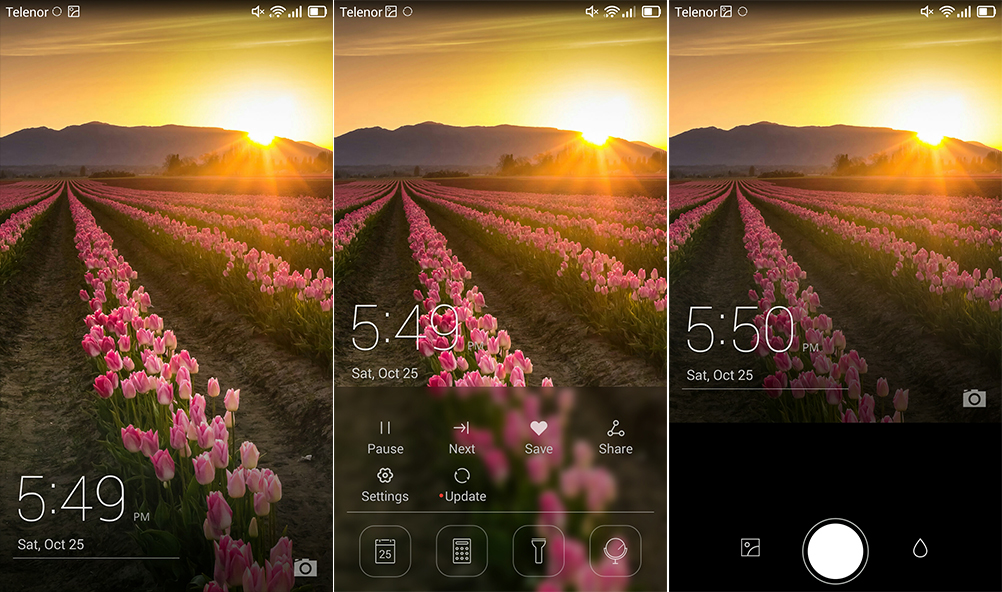
The Homescreen is where all apps installed on the device can be found and organized. There is no dedicated app drawer like the ones found on other Android devices, so the Homescreen is the only place to hold all the apps. Fortunately for the users, however, the apps here can by organized into folders with the help of classic ‘long press and drag’ gesture.
User can also pinch-out or long-press at any empty area to launch the Homescreen customization options which will let them set the wallpaper, drop widgets on the Homescreens, change the transition animation when the user switches between Homescreens, and choose the grid layout (4×5, 5×4, or 5×5).
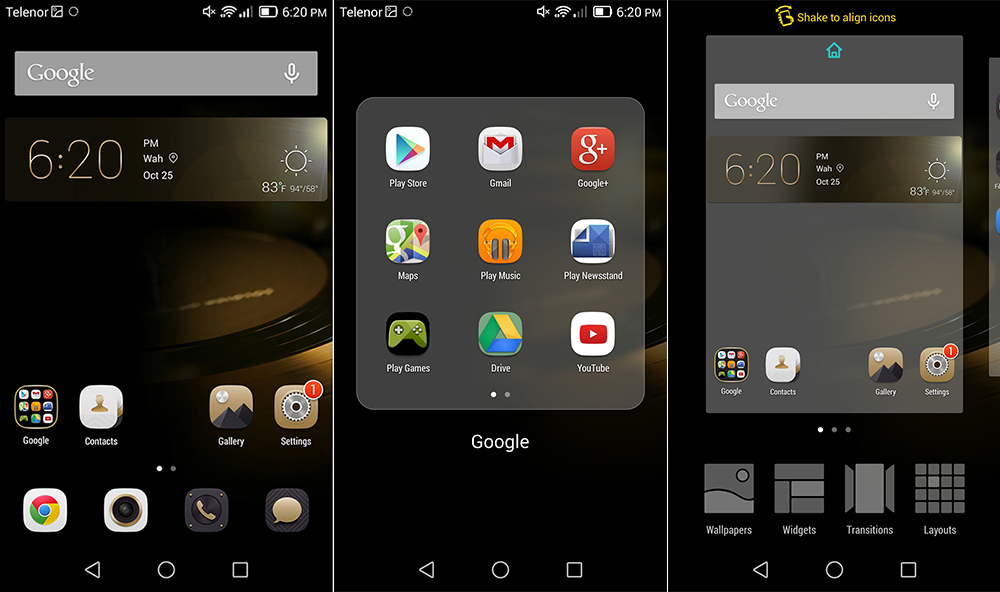
There are several default apps already present on-board when the device is first booted. Among these are Themes, Videos, Calendar, Clock, Notepad, File Manager, Phone Manager, Music, a simple Browser, Calculator, FM Radio, Weather, Mirror, Magnifier, Audio Recorder and others. Several of these apps are bound to be replaced eventually by seasoned users to the apps of their choice but the default apps are capable enough to prove useful for a regular user who doesn’t wish to browse the Play store for alternatives.
The default notification shade can be brought down using the normal swipe-down gesture from top. The shade is divided into two sections: Notifications and Shortcuts. If you swipe down from right-hand half of the screen, the Settings shade will open by default, or Notifications shade otherwise.
Notifications shade shows, as you might imagine, all the phone’s notifications which can be swiped away or interacted with based on what options they provide. Shortcuts shade provide other quick settings such as toggles, brightness settings, power off, restart and other similar options. The Recents button shows the thumbnails of all the currently-running apps which can be swiped up to close, or the window can be swiped up from bottom to close all current apps.
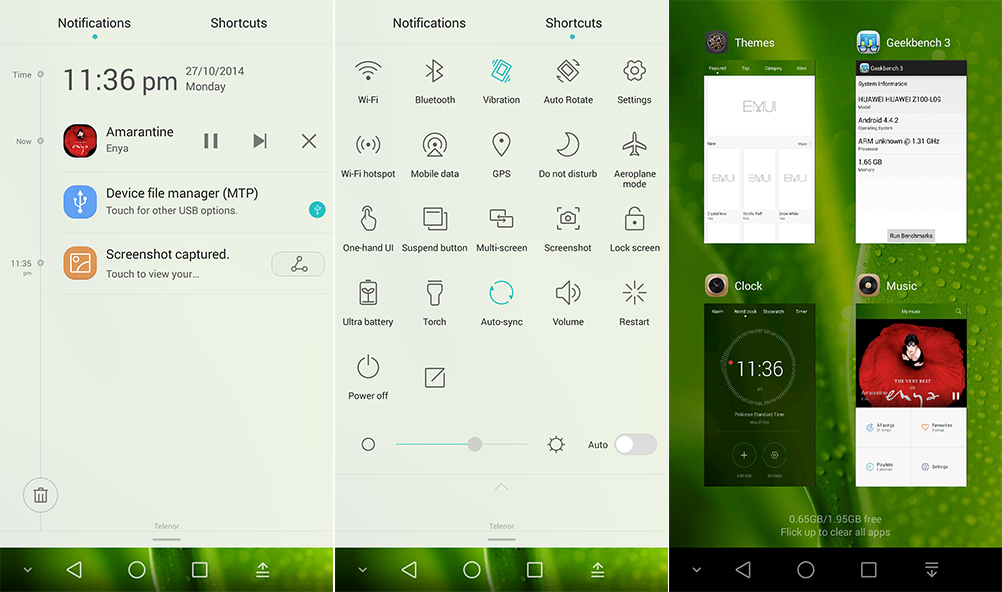
As mentioned earlier, Emotion UI is one of the most customizable manufacturer skins in the world of Android. By entering Settings menu, a user can riffle through all the customization options imaginable on a smartphone device.
For instance, Homescreen can be customized to show icons or a Metro-like tiled interface; display hue and saturation, font size and style, multiple power saving plans (Ultra, Smart and Normal), Lockscreen choices, customization of Navigation bar, and usage of gestures to manipulate with the phone’s software features are only a few of the choices that EMUI lets the user to fiddle with.
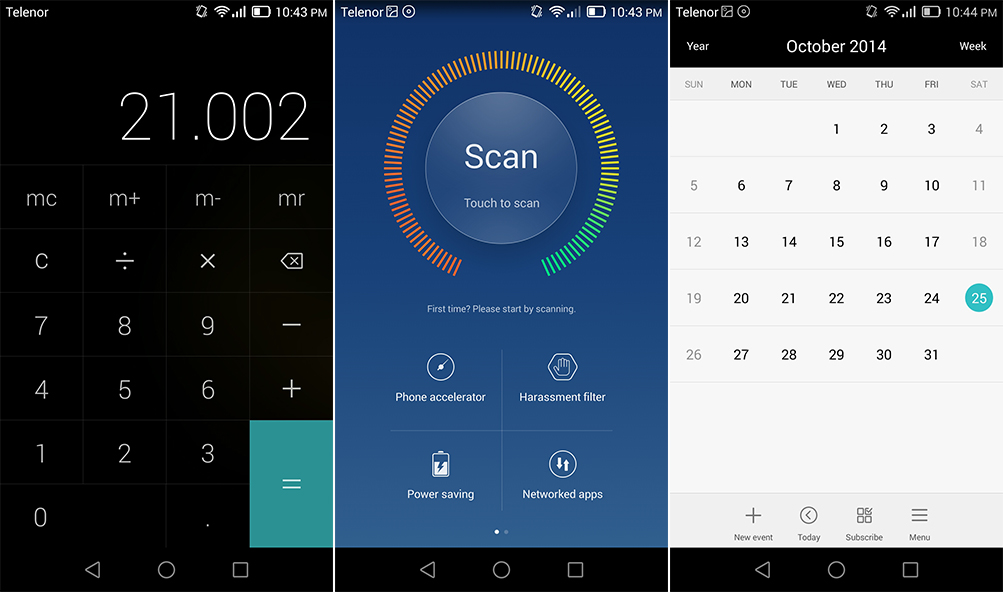
Unfortunately for the users, however, there are no significant native apps (like multi-window) to capitalize on the advantages of the huge display. Huawei has tried to assist in one-handed usage of the device by introducing a feature called One-hand UI but all that it does is to shift the Navigation bar buttons and the Dialer app slightly to the side where user tilts the phone—and that’s it.
Fingerprint Scanner
A number of OEMs in the recent past have tried their hand at fingerprint scanners for their mobile devices but unfortunately only a few can be regarded successful in this foray. Huawei is, most certainly, one of these successful ones.
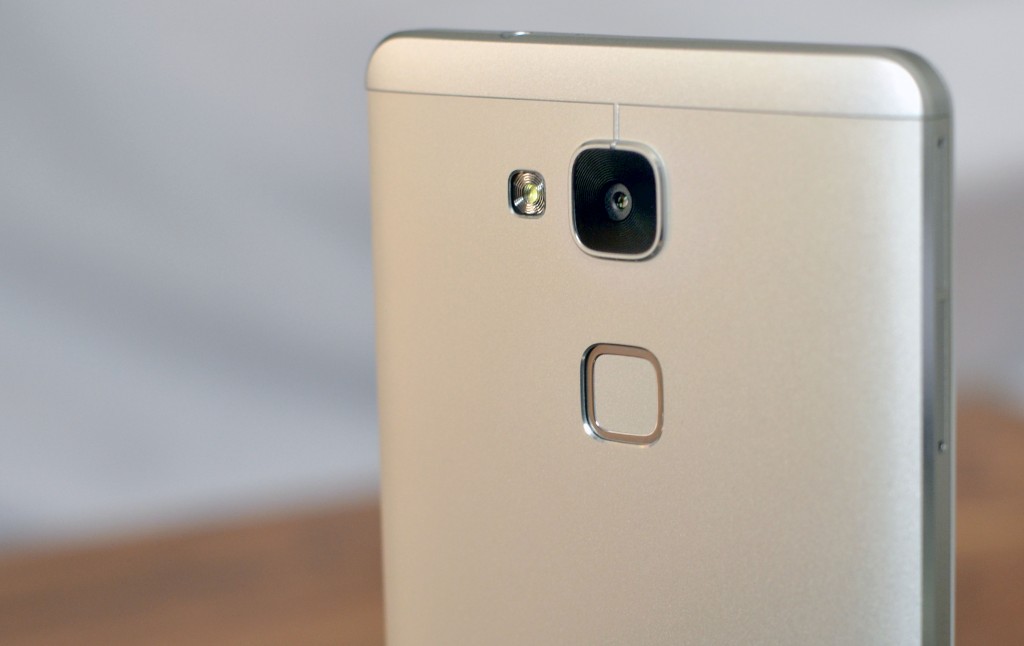
Fingerprint scanner of the Ascend Mate 7 can be found on the back-panel of the device just under the protruding camera sensor. The scanner, unlike the camera however, resides in a concave depression which makes it easy to spot without looking at the back-panel. Identical to Apple’s TouchID sensor implementation, the scanner on Mate 7 has 360⁰ readability which means it doesn’t care in what orientation your finger rests on the scanner—as long as it is a recognizable fingerprint, you’re good to go. Also it only needs a touch to read the fingerprint, no swiping necessary. (Looking at you, Samsung.)
Up to 5 fingerprints can be registered on the same device and once enabled (from Settings > Fingerprint) it can be used for a number of actions. First and foremost, as you might have guessed, it unlocks the screen. And it doesn’t just unlock it: thanks to an additional RF sensor coupled with the scanner, it wakes the device from sleep for you as well so you don’t have to go the extra mile. It’s a feature that seems like the only sensible approach at first but by the looks of it, other OEMs haven’t spared it a thought as of yet.
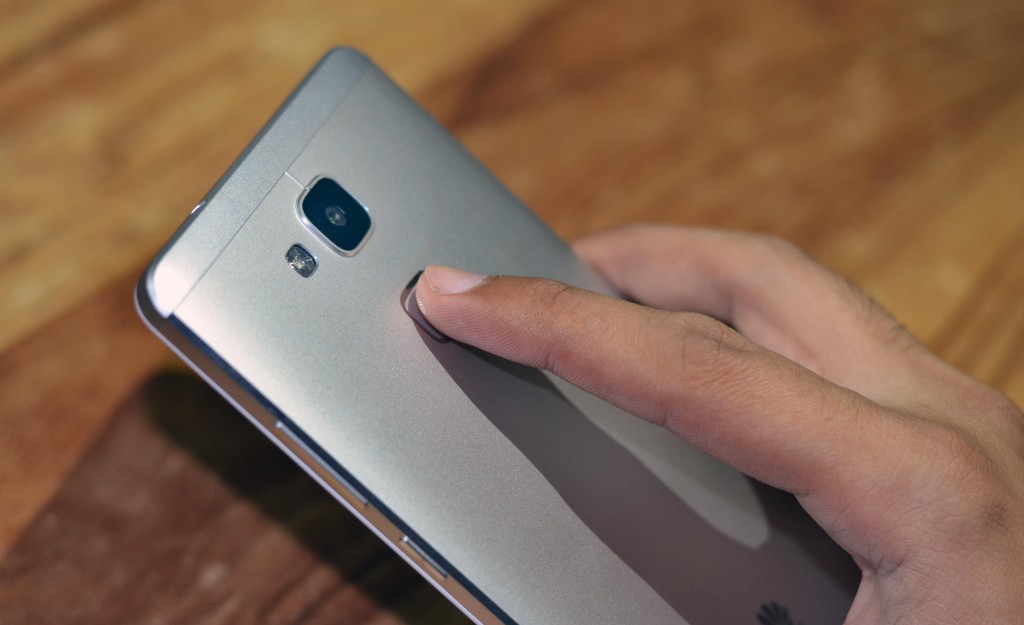
Huawei has thankfully found other uses for the fingerprint scanner as well. It can be used as a camera shutter trigger, for instance. After the feature has been enabled from camera settings (Camera > Menu > Settings > Fingerprint control), the user can simply focus on the subject and long press the fingerprint scanner to trigger the shot. Given the large size of the handset and thus a harder to reach shutter button, we have a feeling that the selfie-enthusiasts will find this feature thoroughly useful.
Moreover, a user can use the fingerprint security for apps and software features as well. From the Fingerprint settings menu, the security can be enabled for unlocking the screen, access to ‘confidential cabinet’ (user’s private files such as videos and photos), access to apps, and logging in to the user’s Huawei account for additional services.
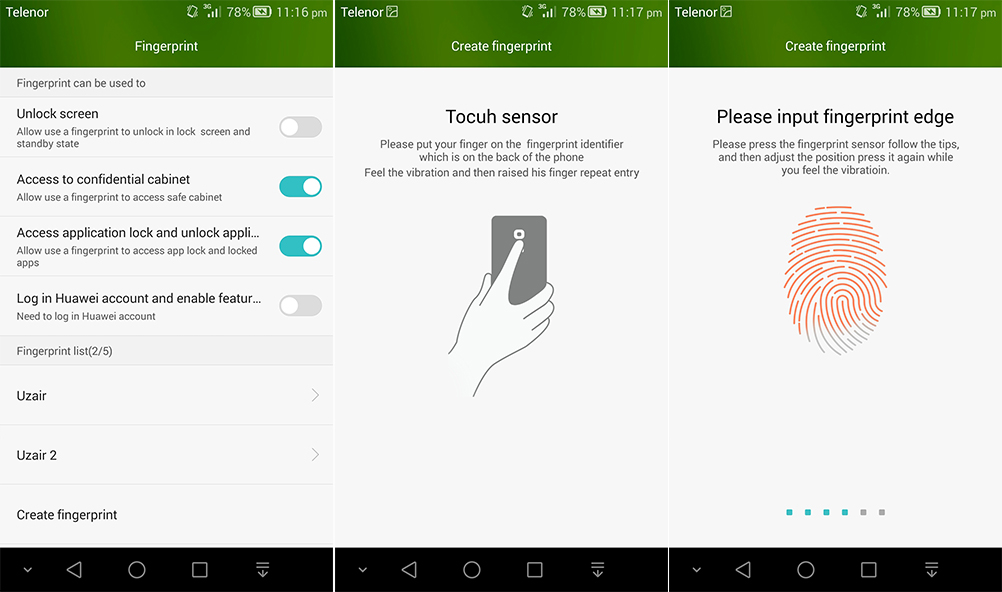
Throughout the testing period, we found the fingerprint scanner to be exceedingly responsive. Waking the device from sleep and unlocking it instantaneously is particularly an idyllic experience. It rarely missed or failed to recognize a registered fingerprint and 360-degree readability works as advertised.
Camera Performance
Huawei Ascend Mate 7 is equipped with 13 MP primary and 5 MP front-facing shooters. The camera interface is thankfully not too overwhelming for a new user, and contains only the major settings and modes that a regular user might need. These include the mode switcher (Photo, Video, All-focus), a Shutter button, and Filters button on bottom; and Flash switch, primary/secondary cam switcher, and Menu button on top of the screen.
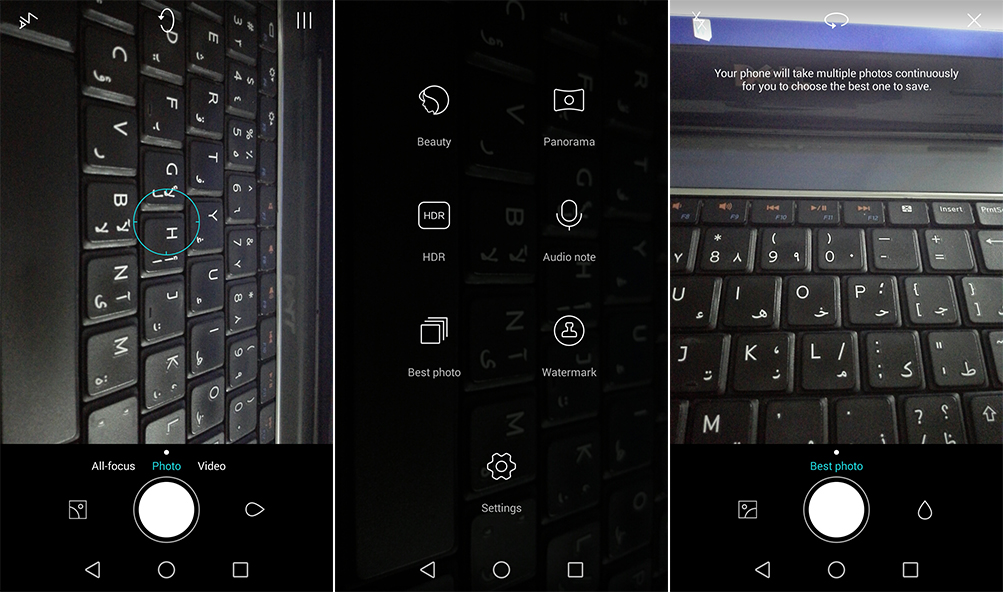
Different photo capture modes are Beauty (to change the photo’s hue, saturation, etc.), Panorama, HDR, Audio Note (records an audio clip after taking the photo), Best Photo (lets the user choose best photo from a burst), and Watermark (adds GPS tag to the photo). Both primary and secondary cameras can shoot 1080p videos, while the primary one can also capture HDR videos.
Auto-focus of the camera is pretty much hit-or-miss, you’ll want to utilize the touch-focus most of the times if you want the shot to look like what you expect. Following are some samples of the Huawei Ascend Mate 7’s camera taken in different settings.
Multimedia Capabilities
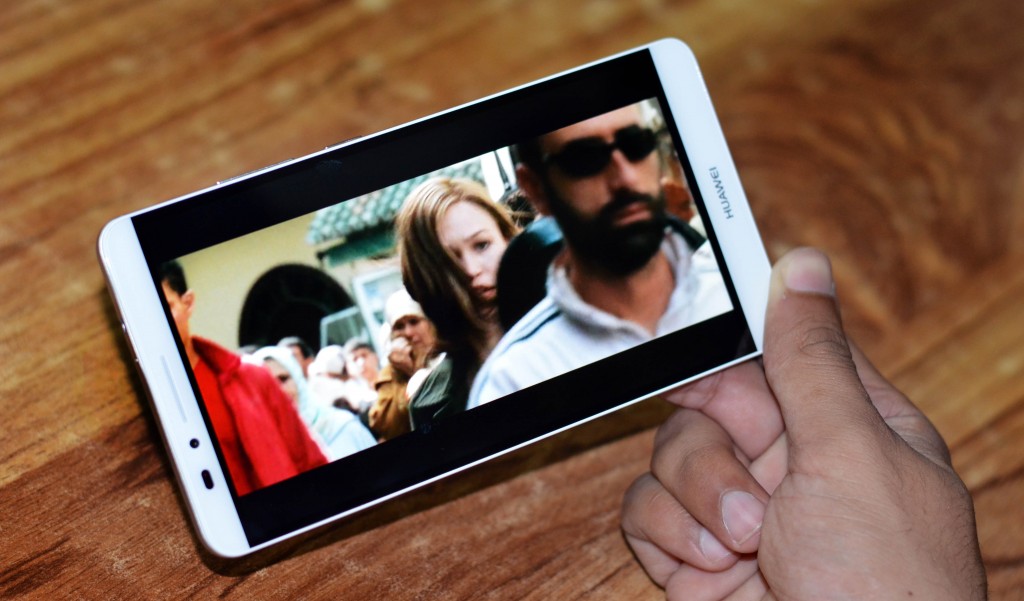
Default media apps that come bundled with the phone include Music, Videos, FM Radio, Gallery, and Recorder. We’ve take the liberty to call Ascend Mate 7 a “True Multimedia Companion” because this is where, in our opinion, the repertoire of the device proves to be most relevant. The large 6-inch display is perfect for media consumption such as reading eBooks, watching videos and photos, playing games, and more. The device has DTS Surround sound enhancement feature built-in which is, although little effective in most cases but still, an added bonus for multimedia consumers.
The default media player apps seem quite up to the task but the video player has no subtitle support and some audio codecs are also missing. The most popular media player for Android, MX Player does an excellent job and once you’ve installed it from Play store, you’re all set. Other apps that we’ll recommend for usage with the device are Aldiko eBook reader and HoverChat.
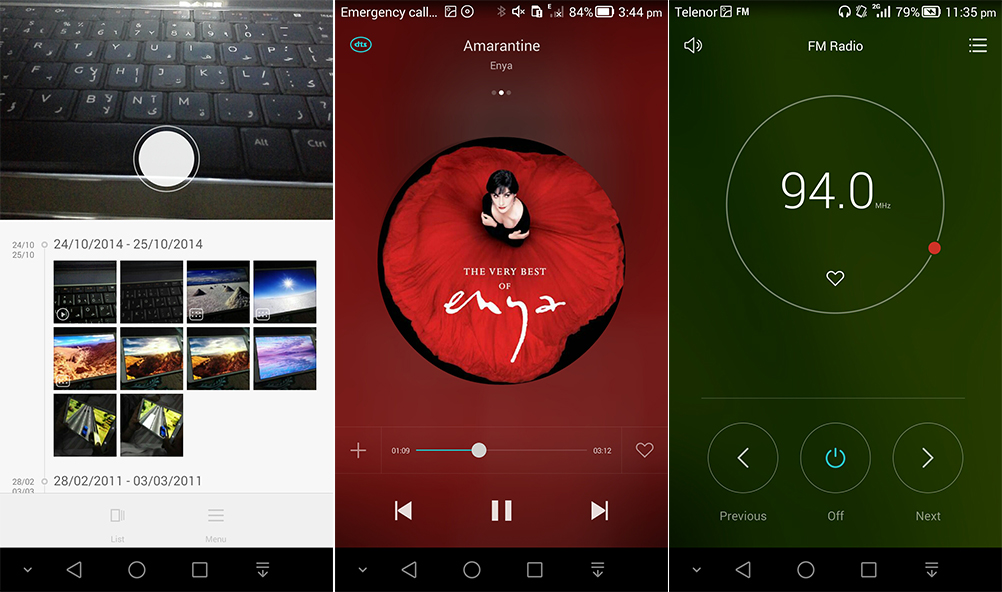
As far as the telephony and communication features are concerned, we didn’t face any particular issue in content downloading, making calls, messaging, or audio/video recording; all these features work perfectly as they are supposed to. Huawei’s extensive experience in telecom equipment manufacturing has been utilized in making the device’s antennae smarter and efficient, and the smartphone supports lightning-fast 3G/LTE-Cat6 speeds.
Battery Life
Huawei Ascend Mate 7 comes with a 4,100 mAh non user-removable battery. It is an above-average number as far as smartphone batteries go but we’re grateful it’s not any lower.
There are multiple power plans (Settings > Power saving) which let the user adjust battery consumption and CPU performance trends. The three modes are Ultra, which restricts phone’s capabilities to only basic functions such as calling and messaging; Smart, which automatically adjusts the power and battery performance; and Normal, which favours better performance over battery consumption. A user can also restrict individual apps from running once the screen has been turned off.
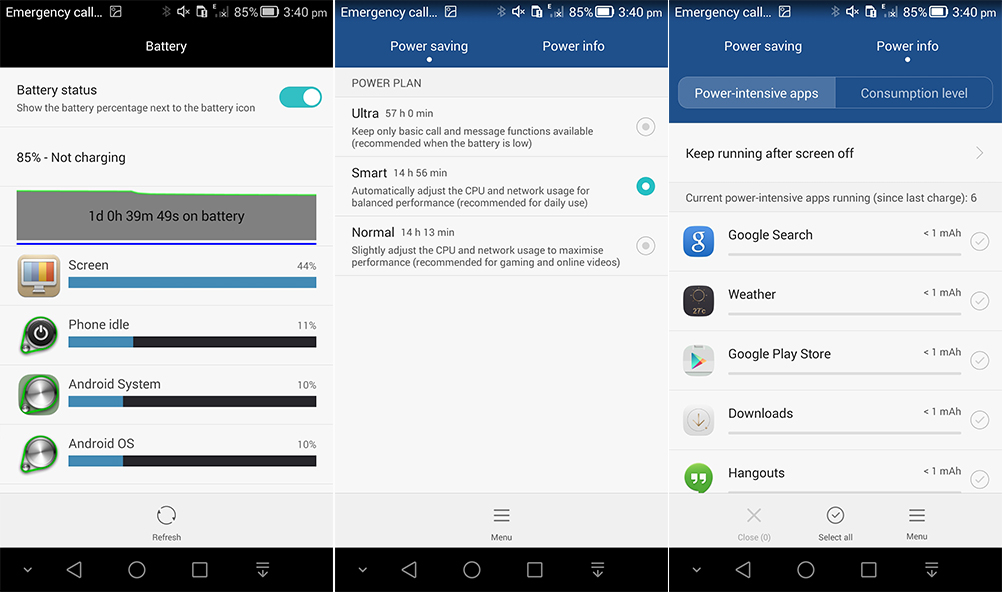
Following are some vital statistics relevant to the device’s battery collected as a result of our testing:
[table style=”table-striped”]
| Activity | Appx. Time |
|---|---|
| Average 0 to 100% charging time (using standard charger) | 2 hrs. |
| MP4 video; Wi-Fi ON | 12 hrs. |
| MP3 audio; Wi-Fi ON | 18 hrs. |
| eBook reading; Wi-Fi ON | 20 hrs. |
| Web browsing | 16 hrs. |
| Talk-time | 21 hrs. |
| Continuous mixed usage | 18 hrs. |
[/table]
Performance Benchmarks
Ascend Mate 7 passed almost all benchmark tests with results on par with other industry flagships, thanks to its octa-core processor coupled with 2 GB of RAM (RAM capacity is 3 GB for the 32 GB model), however one department where it lags considerably behind the curve is GPU performance. Here are the complete benchmark results for the device.
AnTuTu v5.1.5
AnTuTu provides an aggregate score of comprehensive benchmarks which include several CPU, memory, performance and graphics tests.
Geekbench 3
Geekbench is also a comprehensive test of a device’s single- and multi-core performance.
Basemark GUI
Basemark GUI is an industry-standard benchmark of GUI (graphical user interface) rendering performance.
[table style=”table-striped”]
| Device | Basemark GUI Score |
|---|---|
| LG Nexus 5 | 456.79 |
| Asus PadFone Infinity | 344.79 |
| Pantech Vega LTE-A | 342.32 |
| Sony Xperia Z Ultra | 338.16 |
| Sony Xperia Z1 | 329.48 |
| Huawei Ascend Mate 7 | 214.79 |
[/table]
Basemark OS II
Basemark OS II is a system-level all-in-one test of a device’s overall performance capabilities.
[table style=”table-striped”]
| Device | Basemark OS II Score |
|---|---|
| Apple iPhone 6 | 1231.18 |
| Sony Xperia Z2 | 1225.67 |
| Asus PadFone Infinity | 1120.61 |
| Sony Xperia Z Ultra | 1105.66 |
| LG Nexus 5 | 1057.77 |
| Huawei Ascend Mate 7 | 893 |
[/table]
Basemark X
Basemark X benchmarks rank the devices for their graphics and gaming capabilities.
[table]
| Device | Basemark X Score |
|---|---|
| Apple iPhone 6 | 31307.87 |
| Apple iPhone 5S | 27092.21 |
| Nokia Lumia 1520 | 25346.84 |
| Nokia Lumia Icon | 25240.77 |
| Sony Xperia Z2 | 25172.74 |
| Huawei Ascend Mate 7 | 15885 |
[/table]
Inside the Box
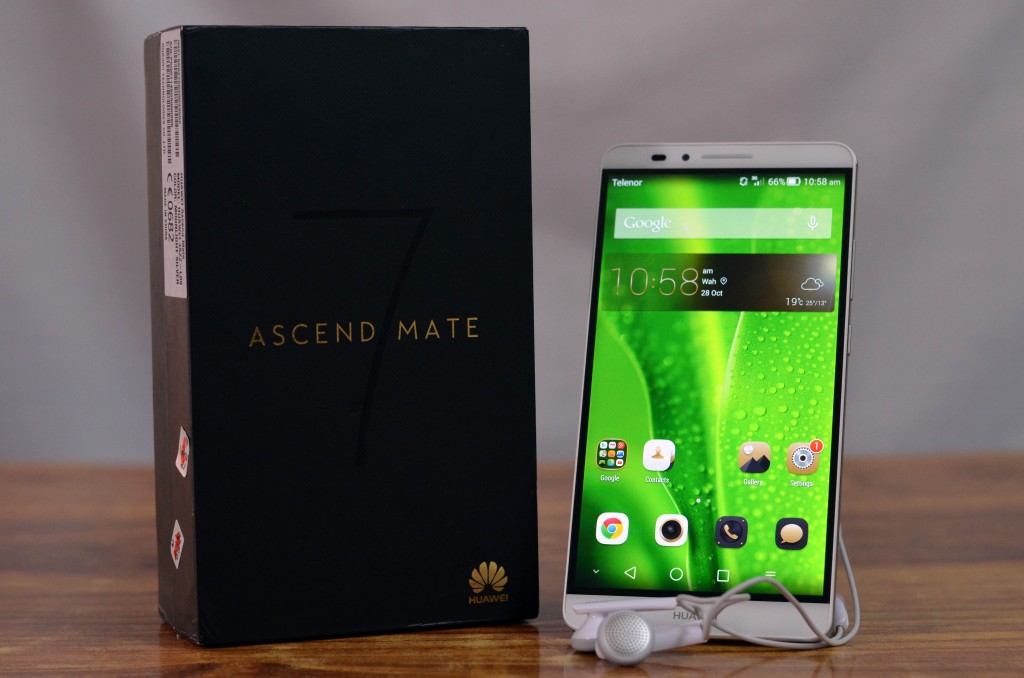
Ascend Mate 7 comes in a stylish dark package which, apart from the depth, is only slightly larger up and across than the phone itself. Proper cut-outs and packaging choices make the unboxing experience a breeze before you begin with the device itself. Inside the box you’ll find:
- A Huawei Ascend Mate 7 unit in the color of your choice
- A SIM ejection tool, tucked away in the under-side of the opening flap
- A pair of earphones
- A compact AC adapter with output rating of 5VDC, 2A; input: 150—240 VAC
- A USB cable
Device Pros & Cons
[table style=”table-striped”]
| Pros | Cons |
|---|---|
|
|
[/table]
Price & Availability
Huawei Ascend Mate 7 was recently announced to be released in Pakistan and can be purchased from several online and brick-and-mortar retailers throughout the country. The price for the smartphone is Rs. 50,000.
Conclusion
Despite all the minor shortcomings, Huawei Ascend Mate 7 is Huawei’s true flagship. It has a premium build, a near-perfect fingerprint scanner, decent cameras, and is a solid performer. Despite all these strengths, however, it still struggles to achieve a must-buy status. There are several close competitors in the market which offer better camera quality (Samsung GALAXY Note 4), similar or better build quality (Apple iPhone 6, HTC One M8), better hi-res display (GALAXY Note 4, LG G3), and spectacularly large battery life (Sony Xperia Z3). Ascend Mate 7 attempts to combine a little bit of all these aspects and for its price range, it only nearly ends up proving to be better than the sum of its parts.
Throughout our testing period, we found the device to be pretty capable but it is nowhere near future-proof. It will, no doubt, have certain appeal for a subset of gadget-lovers especially those who crave a metallic build and have an affinity for fingerprint scanners, but the pace at which technology is moving in this day and age, Ascend Mate 7’s strongest features will soon be rendered a thing of the past by its currently-available and soon-to-come competitors. In a society like Pakistan where brand-consciousness is still alive and thriving, and people consider a device’s resale value before buying it, Mate 7 betrays the prospect of what a user could want against the price it asks for.
